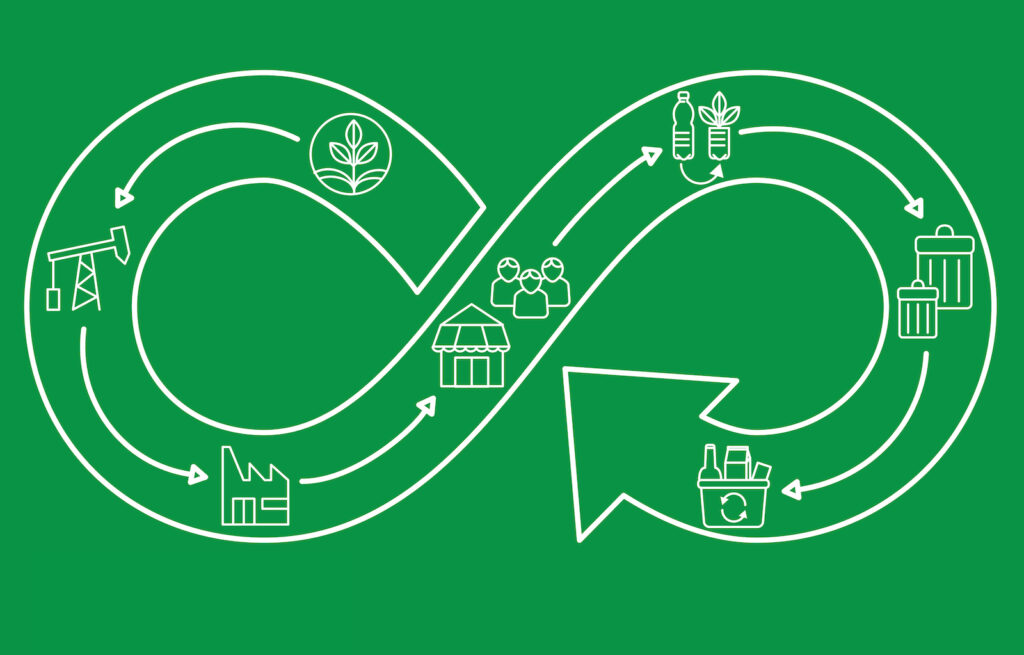The business case around circular economy approaches in the buildings sector is conclusive and the environmental case against the current linear model of construction, demolition, and disposal is damning —yet wasteful building development culture persists globally. The equivalent building development of the city of Paris will be built each week around the world from now until 2060, according to EMF projections, while older buildings are continually demolished and disposed of. A circular solution is the only way to plug the hole, stop rampant waste, and start generating more value from condemned buildings.
“A building is usually reduced to a 'material cemetery' at the end of its life. We want to show how we can create a profit from disassembling and recycling a significant portion of the materials contained in a building's shell,” says Casper Østergaard Christensen, architect and head of circular building practice at GXN. “When building a structure, we should think of all stages of its life cycle. We should know in advance how to tear it down and what we will make of any of its components”
The lifecycle of every material in the construction process should be under the circular spotlight. Concrete production, for example, accounts for a staggering 8% of global CO2 emissions through energy consumption during the extraction and production processes but also from the release of embodied CO2 in the limestone during the calcination process. Steel production, meanwhile, makes up around 7% of global CO2 emissions and production is forecast to grow by 30% to 2050. These two primary building materials alone, represent a staggering 15% of global CO2 emissions, and while a lot can be done to make production greener, several studies suggest that most buildings are “overspecified”, using far more materials than they need to.
Two UK studies, one published by The Royal Society and the other in the Journal of Resources, Conservation and Recycling, have shown that buildings could be designed with 20% less cement and as much as 46% less steel without jeopardizing the stability and resistance of the structures. This is just a matter of efficiency, however, the circular economy approach will then drive the reuse and recycling of building materials at the end of a building’s operational life. Reusing these materials is greener and more cost-effective than recycling, as it avoids the need for steel re-melting and concrete grinding, and there is now a growing movement for the standardization of building materials to support a structured used parts market for buildings.
“Let’s not underestimate the power of the specification in the circular economy. Clearly listing in our specifications all parameters integral to product choices, including circular economy data, helps to embed researched selections into final designs and ensures that any substitutions are truly equivalent and don’t compromise the value-adds that circularity provides,” writes Nicola Smith, Technical Officer at the LFIA. “As building professionals, we need to drive circularity. It’s common sense to design for longevity and recyclability, to choose quality local materials with recycled and/or carbon-sequestered content, and to salvage whatever we can. Leadership in the circular economy is the least we can do to value and protect the precious resources we extract from the earth and the carbon invested in materials throughout their life cycle.”

Considering the obvious solution and grave implications of inaction, many would look to regulators to enforce change that is healthy for the market, the economy, and the planet. However, the circular economy demands fundamental shifts in mindset, business culture, and value chain structure, while the global construction industry is not known for its ability to evolve quickly. The buildings sector is not ready to handle stricter circular economy regulation but without it, progress will be far too slow. All building stakeholders must understand how the circular economy helps their business and the planet. So, to drive this circular approach, our building regulators must become educators as well as disciplinarians.
"We will have to change the whole value chain from the designer to the inspector so that everyone is engaged in thinking and designing and building in a different way. Circularity in construction represents a whole new ecosystem and a new way of thinking. The building sector is made up of small companies, and this makes it difficult to convert to a circular economy model quickly," says Pascal Eveillard, the Sustainable Business Development director of Saint-Gobain. "If we want to move the market to more circularity, we need better regulations. If we leave the market alone, just 5 to 25 percent of builders will change. Regulation needs to be explained to all stakeholders, and there is a huge need for training and to optimize the design."
We must move past the pure enforcement practices that have defined our fight against building emissions and instead try to foster, nurture, and encourage this transformational shift. Key elements of a circular infrastructure should be put in place by authorities, either directly or by bringing together organizations that stand to benefit most. Circular business actions should be incentivized, transformations should be rewarded, and the development of new circular solutions should be accelerated. All this starts by educating the industry on why the circular economy is the best answer to sustainable growth.
“The circular economy calls for a deep societal transformation, where construction techniques evolve towards achieving the highest degree of material efficiency, and building design is driven by lifecycle thinking, aided by digital tools and by public policy rules and incentives,” write Xavier Le Den and Andreas Qvist Secher of Ramboll. “A new economy is needed which rewards sustaining existing materials rather than demolishing and replacing with new raw materials. The feasibility of these actions has been demonstrated in individual projects and detailed in studies. Now, it is up to all stakeholders of the building sector, including policymakers, to steer change in the built environment towards more circular and climate-friendly practices.”



